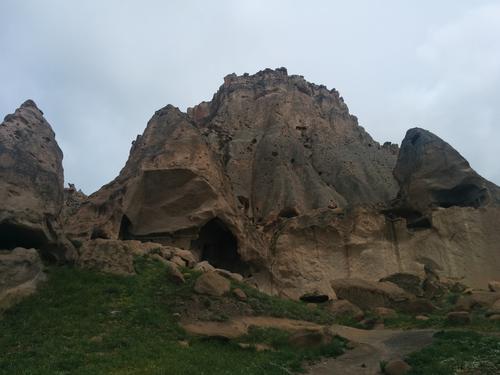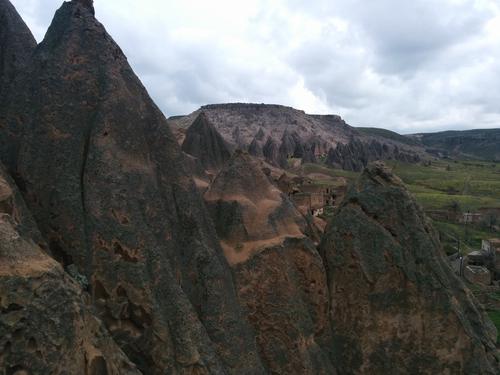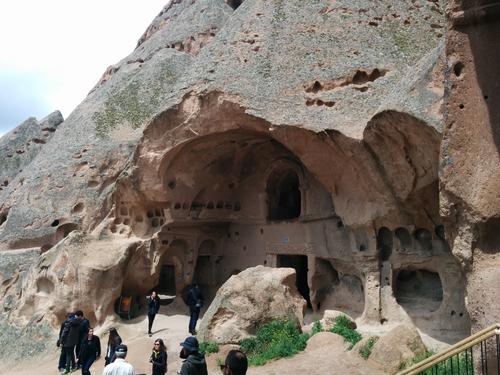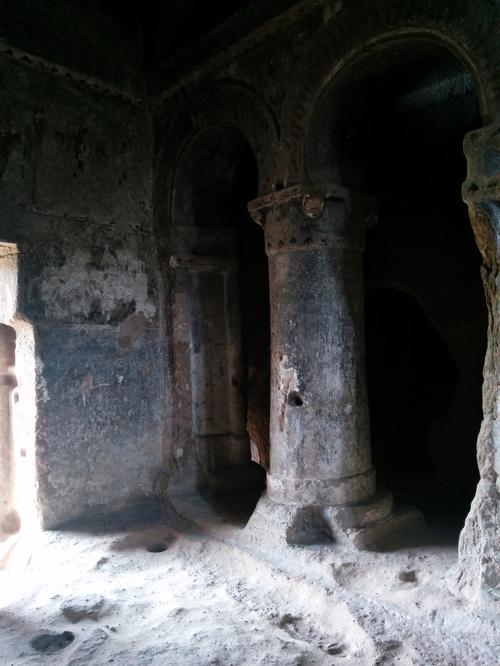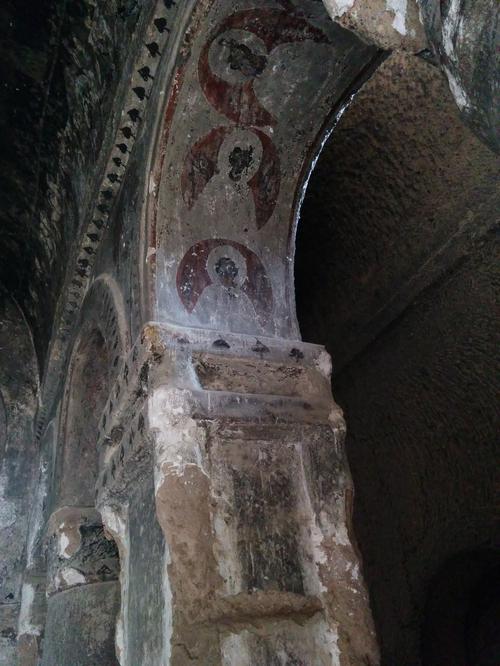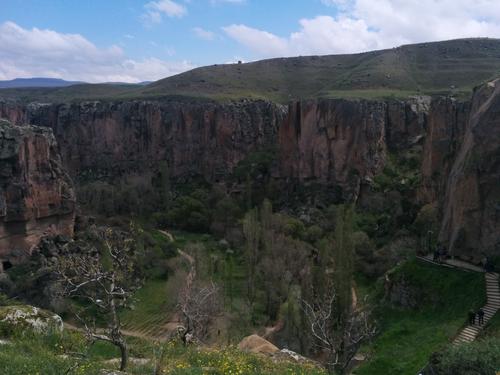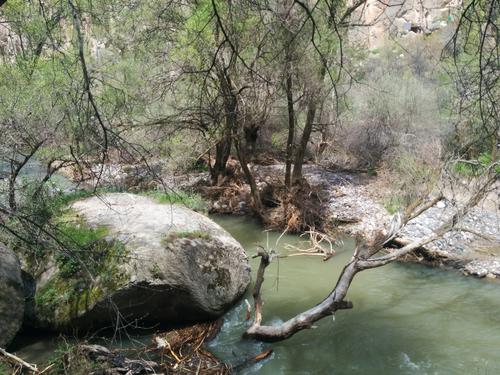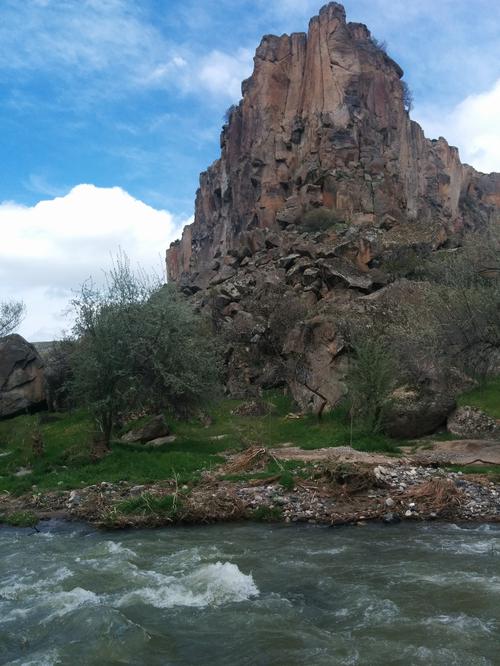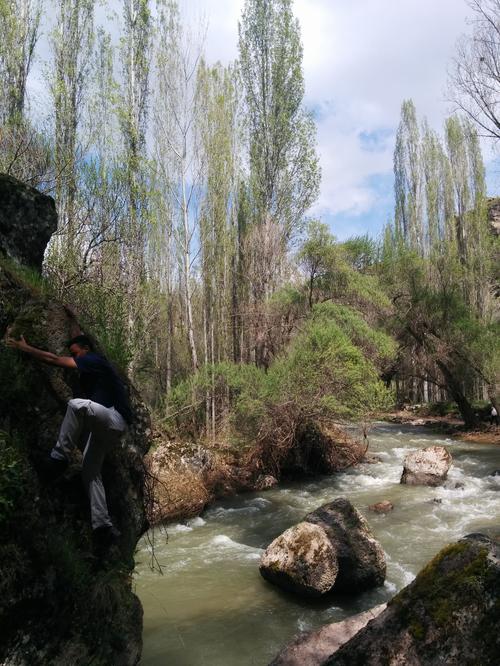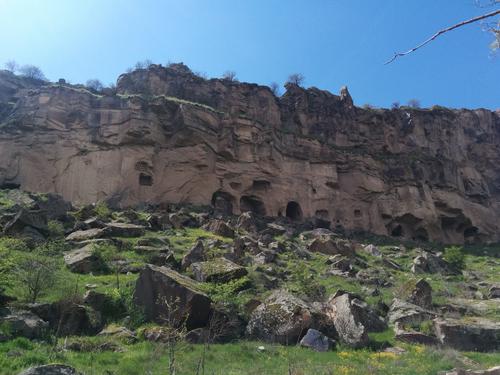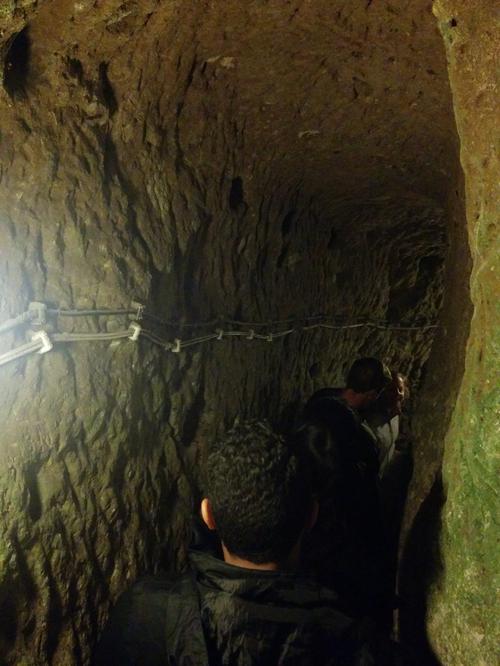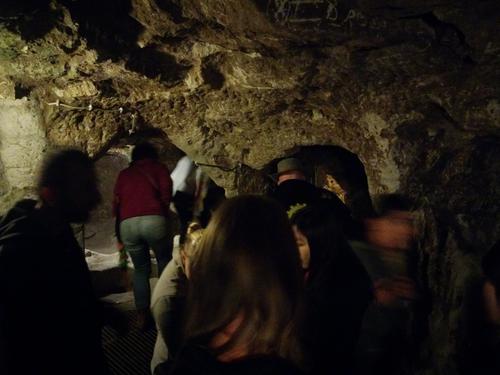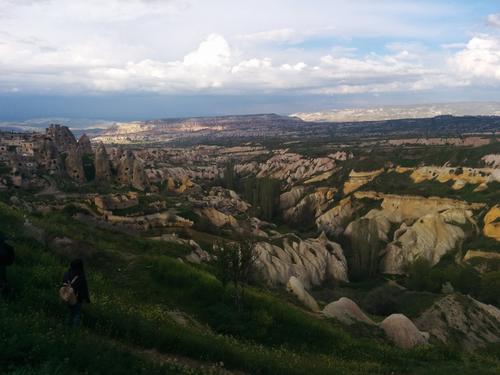04 May 2015
Cappadocia, part II - More pretty places
Once more, I’m sitting in a cafe, this time in Samsun. The coffee is decent, but the wifi is not. I haven’t yet managed to outsource my writing to Vietnamese contractors, either. I guess I will have to continue the tale myself. Cappadocia, let’s see…
Selime Monastery
The next stop on our Cappadocia-tour was to be Selime monastery. When he wasn’t hitting on that poor Chinese girl, our tour guide did actually tell us a thing or two about the monastery.
Apparently George Lucas considered those spiky rocks in the distance as a set for Star Wars: A New Hope. Unfortunately, he couldn’t get the permits to film in Turkey, so he had all that stuff rebuilt in North Africa.
As you can see from the pictures, the whole complex was not built on, but rather in the rock. The caves and tunnels had first been a caravanserai, a pre-modern motel for traders and travelers. Later it had been turned into a monastery by christian-orthodox monks. Wall-carvings and inscriptions can still be seen around the various rooms. After the monks left the place, it was used as a crow’s nest for the town and served, at various points, as garrison to armed units.
In the centuries after that, it had seen use as a giant fridge (the villagers kept their foodstuffs there) and as a hobo-haunt. The latter had - with enviable pragmatism and lofty disregard for the dusty past - all but destroyed countless wall paintings. Can’t have a rat BBQ without a smoky fire!
After listening dutifully, we were given about 20 minutes to explore the monastery on our own. Despite the annoyingly tight timeframe, we had lots of fun. It turns out that people here don’t really close off any parts of old ruins or monuments. This leads some people *cough* to climb through every small tunnel and jump from ledge to ledge like Prince-of-Persia reborn. The three of us really did enjoy this!
Unfortunately, before we knew it our time was up and we had to get back to the bus. This is one of the reasons I usually don’t like to take tours.
Ihlara Valley
After lunch at some basic tourist restaurant, we drove a short while to Ihlara Valley. Here we would do a ‘hike’, all of 4km!
The valley used to be home to several hundred people, who lived in caves in the steep cliffs on either side of the valley. As we arrived there, our tourguide looked fairly annoyed at the sheer number of visitors. The valley itself turned out to be teeming with tourists, too. We ended up marching down into the valley and then along the river, swept along by a stream of tourists. This, again, was unfortunate: They valley was a pretty place:
Eventually, we exited the valley at the other end and got back on the bus.
Derinkuyu Underground City
The last real sight on this tour was Derinkuyu underground city. The entire area around Göreme is riddled with caves and tunnels. Partially, this is the result of geology, partially that of history. Göreme and neighbouring villages were home to early christian groups. For a long time, the roman emperor was not a fan. In order the escape religious persecution, the locals started digging emergency shelters. In their heyday, these would offer shelter to around 80,000 for a duration of up to three weeks. Of these underground cities, we visited the largest one, Derinkuyu.
The caves reach down 7 floors (around 60m) consisting of numerous caves, tunnes and staircases. As of 2015, only about 5% of the underground city are open to the public, the remaining bits are closed off for safety reasons (or maybe they are still hiding christians in there?). It is estimated that Derinkuyu could have sheltered around 20,000 people. The caves are acccessed via increasingly narrow and low staircases. Sooner or later the hunched-over posture leads to a headache, as we found out. Limbo’ing every other staircase helps and looks hilarious, too. The rooms themselves are a lot more spacious and have designated functions: Living rooms, nurseries, schools, a church and so forth. They even had underground stables, to protect their lifestock from all that religious persecution. While food stores would only have been sufficient for around 3 weeks, the city had several wells, dug down to 80m below ground.
In many places the defensive nature of the caves was clearly visible: The narrow tunnels would have been easy to defend and many of them had massive disks of stone, which could be rolled to block the tunnels. If I was a legionnaire, I would prefer not to fight underground like that. Luckily, I wouldn’t have to: Hooray for flint, steel and resinous wood!
Though most rooms do have eletric lighting, the entire affair is somewhat dark. This makes exploring the tunnels a lot more exciting but didn’t really do much for the value of my pictures:
The underground city is an impressive sight and well worth the entrance fee. However, it’s clearly not the place for people who are either claustrophobic, obese or both.
After around an hour we forced our way past other tourist groups and back up to the surface. We hopped back on the bus and did one more photo shot from the other side of pidgeon valley:
As a last step we stopped at a jewellery store to hear a ‘presentation’ on local minerals - you know the kind. Having stepped through the store, Marc, Mohamed and I waited for the others outside, before driving back into town. We spent the evening chilling at a restaurant/bar, before walking Mohamed to the coach station. He was taking a night bus back to Istanbul and we bid him goodbye before calling it an early night.
Until next time,
Arne

